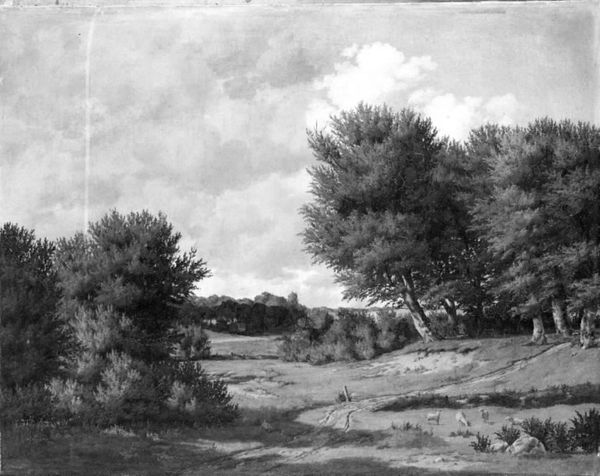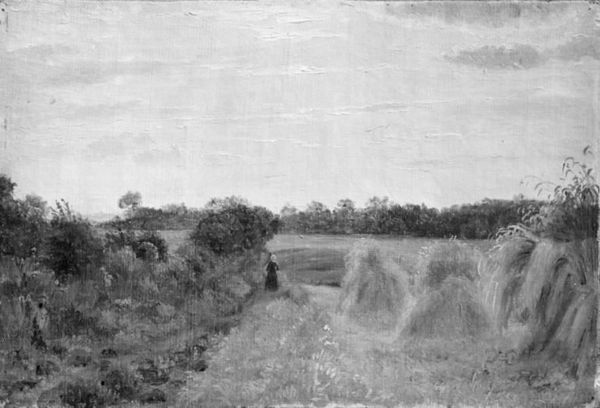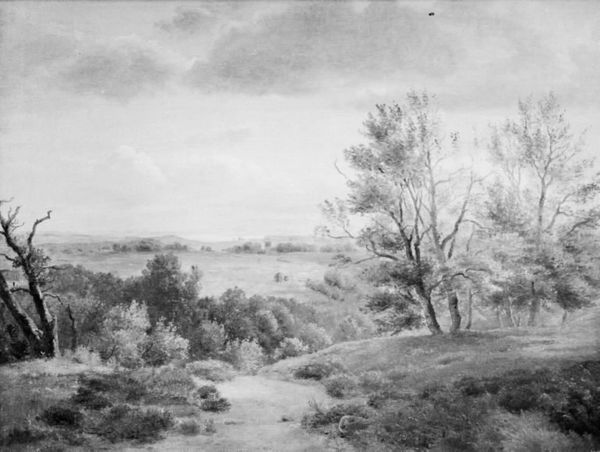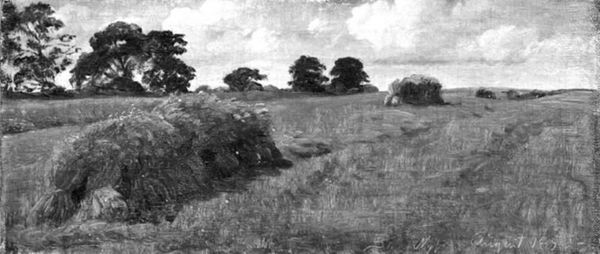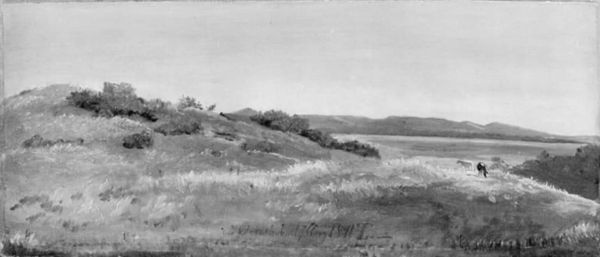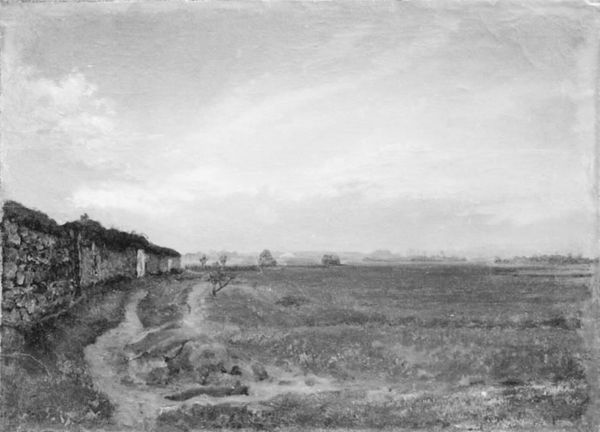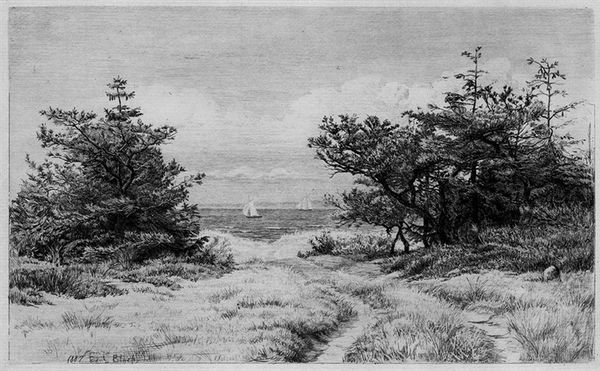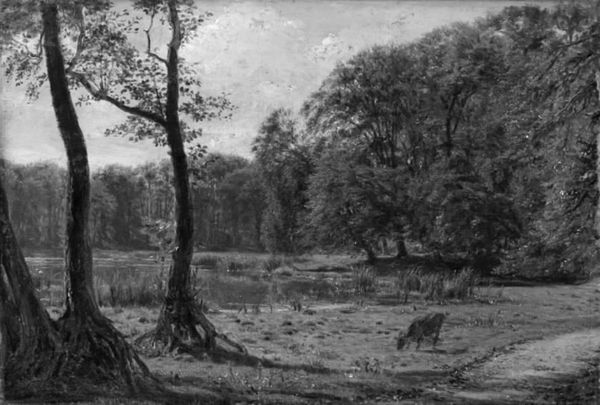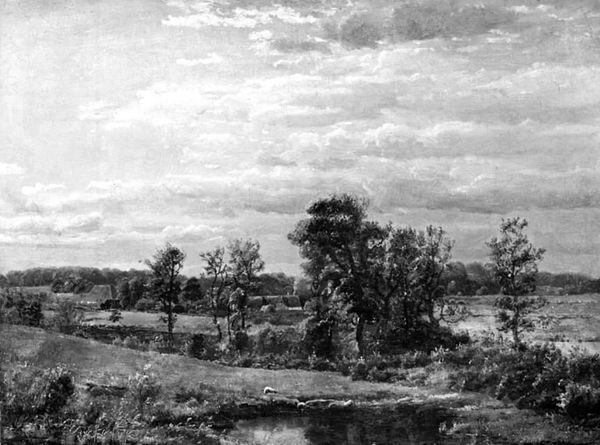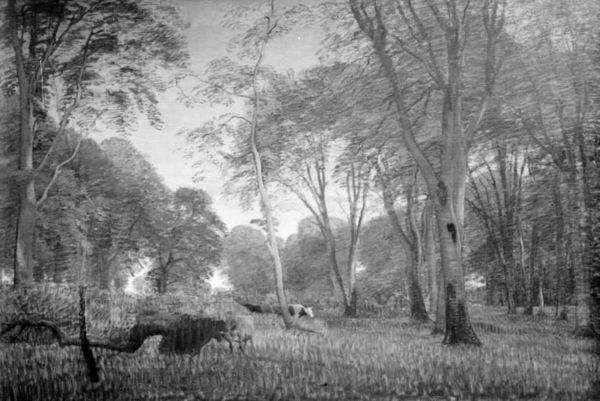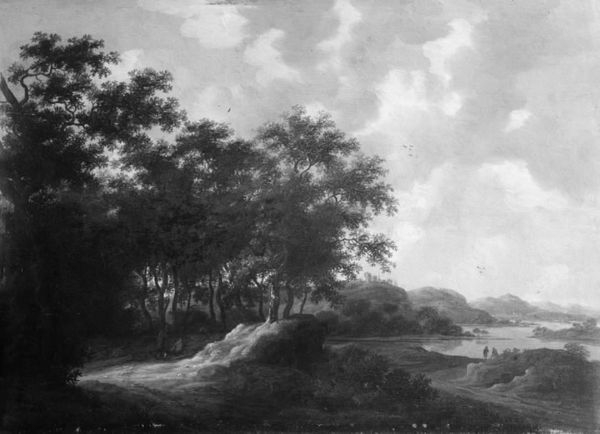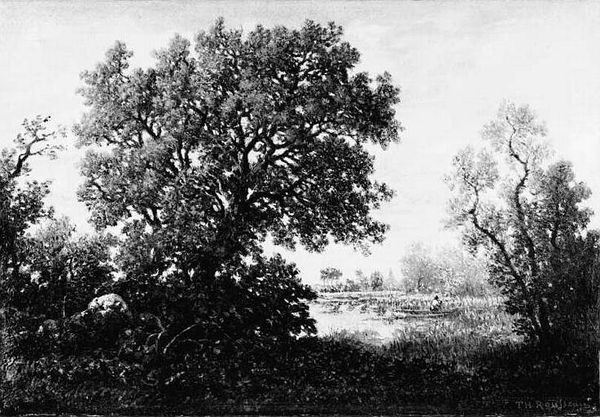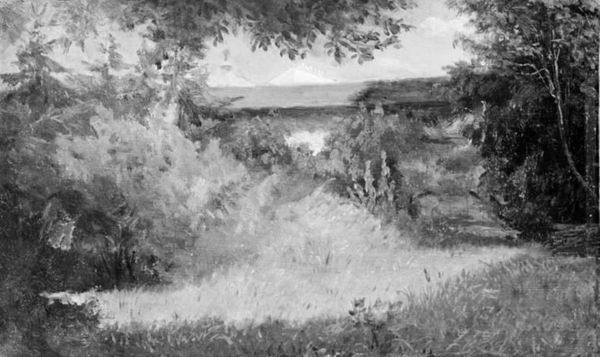
plein-air, oil-paint, impasto
#
plein-air
#
oil-paint
#
landscape
#
impasto
#
black and white
#
genre-painting
#
monochrome
#
realism
#
monochrome
Dimensions: 21.9 cm (height) x 24.1 cm (width) (Netto)
Curator: It's rather subdued, isn't it? A monochrome world, a bit melancholic perhaps. Editor: Indeed. We're looking at Vilhelm Kyhn's "Landscape with a Fishing Boy by a Stream," painted in 1861. Kyhn was very interested in depicting the Danish landscape, a focus rooted in national romanticism. Curator: You can really see that attention to detail in the foliage. There's a tactile quality, a roughness to the impasto. But why grayscale? Editor: Interestingly, it appears this piece was made *after* color photography began making inroads. Remember, painting had a huge role documenting the natural world at the time. Yet this painting chooses monochrome. It is, after all, plein-air art that favors capturing tonal variations and immediate impressions over faithful documentation. Curator: So the choice becomes more about aesthetics, about capturing a mood? What about the fishing boy? Is he just a minor element? Editor: I think his presence anchors the composition, giving it a human element. At this time, Denmark was undergoing many shifts. Agricultural reforms. Increased industrialization. Perhaps the fishing boy signifies a yearning for an earlier age. One rooted in natural practices. Curator: A visual metaphor, perhaps, for the nation’s collective longing. This painting definitely provides plenty to contemplate beyond a simple picturesque scene. It also highlights that there are a variety of historical and art movements happening all at once. Editor: Absolutely. It presents a focused look at landscape aesthetics amidst periods of substantial socio-cultural change.
Comments
No comments
Be the first to comment and join the conversation on the ultimate creative platform.

